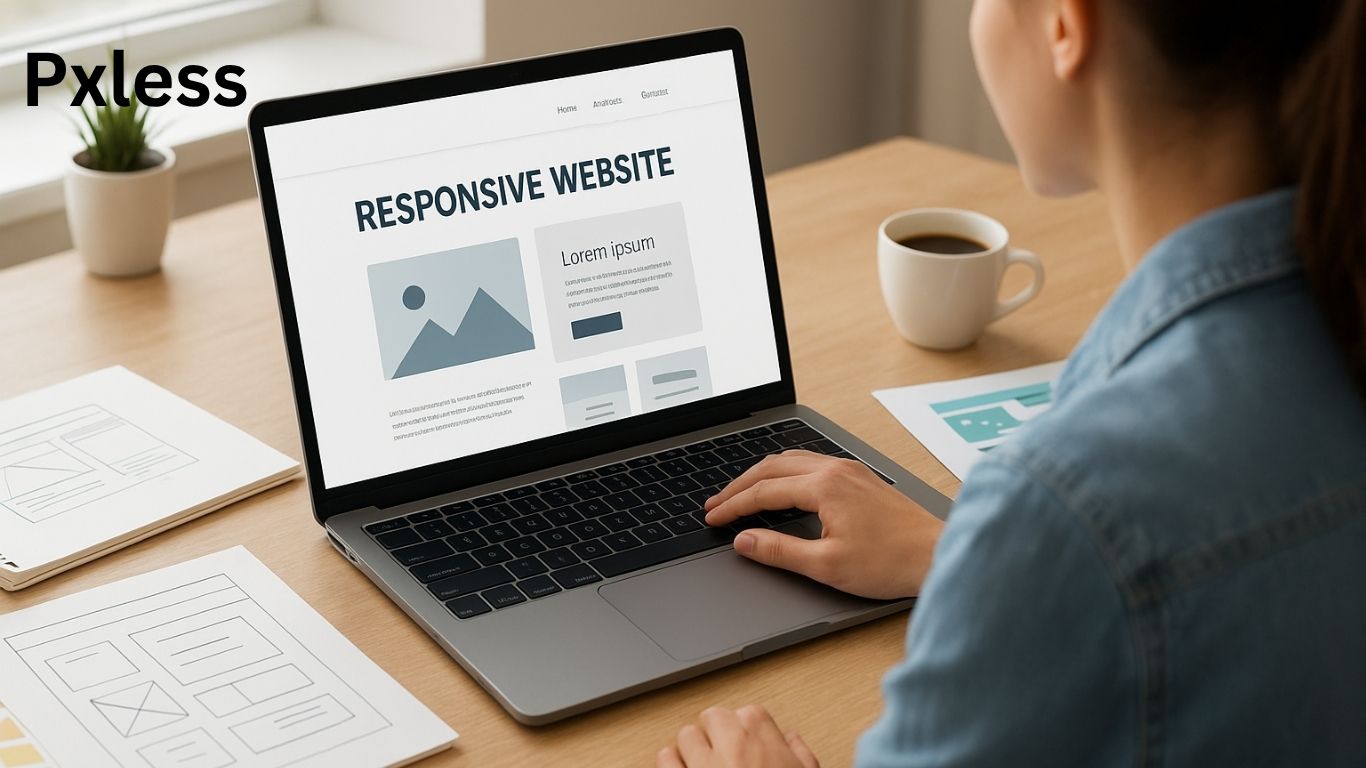Introduction
New trends are usually exhibited in digital design world which is constantly changing and redefines the way in which designers think about creativity, user experience, and aesthetics. Pxless is one of the newest buzzwords that are sweeping the design community. However, what is Pxless, and why does it seem like everyone in the design, development, and creative worlds is engaged in a conversation about it?
This paper goes into high levels and understanding of the concept Pxless, what it is, how it operates, why it is important and how you can apply it to your own design projects to modernize them.
What Does “Pxless” Mean?
Conventionally, web and UI designers have been using pixels (px) as a size measurement unit to determine the size, margins, and layouts. Although this approach is both accurate and precise, it also can be restrictive in terms of scalability and flexibility, particularly in the context of a world in which users visit a web site on hundreds of different screen resolutions and sizes.
Pxless is a design philosophy that goes beyond the use of pixels in measurements of designs and puts emphasis on responsive, fluid, and adaptive design principles. It focuses on the development of designs that will appear excellent on any gadget- not limited to fixed pixel sizes.
Pxless in simple terms refers to designing without pixels. Rather than designing in pixel increments, designers actually work with relative measurements (em, rem, percent, vh and vw) to design layouts that can be dynamically reconfigured to fit various screen conditions.
The Core Idea Behind Pxless Design
Freedom and flexibility are the core aspects of Pxless design. It subverts the traditional pixel-perfect thinking and accepts the fact of the new digitized world, where screens are of every shape and size- smart watches to 4K screens.
The Pxless is a method that gets designers to reason proportionally rather than in a precise manner. You do not design a device, but design all the devices. It is an attitude that places more emphasis on accessibility to the user, responsiveness and flexibility, rather than pixel perfection.
Why the Pxless Trend Is Growing
The emergence of Pxless design could be explained by a number of contemporary changes in technology and user behavior:
- Increase / Decrease in Explosion of Devices and Size of screens.
As users get the ability to access websites with all kinds of devices like smartphones and smart televisions, pixel-based layouts tend to break. Pxless design are made to make interfaces beautiful and functional on all devices.
- Accessibility and Usability Focus.
Pxless design is designed with scalable text and customizable spacing and flexible elements that are inherently more accessible to everyone, even those who need to use a zoom or a larger font size.
- The contemporary Web Development Tools.
Such frameworks as Tailwind CSS, bootstrap 5, and CSS grid encourage using flex units and responsive grids, and Pxless design has never been more straightforward to develop.
- SEO and Performance Advantages.
The Core Web Vitals rewarded by Google are those that load fast and are responsive in various devices. Pxless design will be used to enhance user experience, which will indirectly increase the rankings of SEO.
How Pxless Design Differs from Traditional Design
Let’s compare how Pxless differs from conventional pixel-based design approaches:
| Aspect | Traditional (Pixel-Based) | Pxless (Responsive) |
| Measurement | Uses fixed px units | Uses em, rem, %, vh, vw |
| Layout Behavior | Static and fixed | Fluid and adaptive |
| Device Compatibility | Designed for specific screens | Works on all screens |
| Design Philosophy | Pixel-perfect precision | Flexible, scalable design |
| Accessibility | Often limited | Highly accessible |
| Maintenance | Difficult across devices | Easier and more consistent |
In essence, Pxless design prioritizes adaptability over rigidity, ensuring that users have a seamless experience regardless of how or where they view your site.
Key Principles of Pxless Design
To successfully embrace Pxless, designers follow a few essential principles:
- Use Relative Units, Not Pixels
Replace px with units like:
- % for fluid widths
- em and rem for text sizes
- vh and vw for viewport-based scaling
- Think Mobile-First
Begin layouts on smaller screens, expand later on the larger screens. This makes the design flexible at all levels.
- Take advantage of CSS Flexbox and Grid
These design systems of the modern world render Pxless design practical, efficient, and enable the elements to be flowing naturally at varying resolutions.
- Optimize for Accessibility
Enable font sizes, colors and layout to be dynamically responsive to user preferences or browser zoom levels.
- Test Across Devices
Pxless is everything about consistency, thus it is important to test the app on multiple devices and screen orientations to ensure a balance and usability.
Benefits of Going Pxless
Implementing the Pxless design approach has several advantages to the designers and end-users:
- Enhanced Responsiveness: Your design is responsive to any size of the screen.
- Improved Accessibility: It is easy to scale text and content.
- Future-Proof Design: Your layouts will be up to date with new devices coming out.
- Easy Maintenance: A single flexible design does not need any device-specific adjustments.
- Increased SEO Performance: Google preferring mobile friendly and responsive websites.
To companies, Pxless design may translate to increased interaction with users, reduced bounced rates, and better brand image.
Challenges of Pxless Design
Although Pxless is mighty, it is not devoid of obstacles:
- Learning Curve: Designers that are accustomed to pixel accuracy may require time to get adjusted.
- Browser Inconsistency: The old browsers might display flexible units in a different way.
- Complex Testing: To make sure that a design is flawless in dozens of devices, it needs to be carefully tested.
These issues however are getting solved as responsive design tools and browser support continues to gain.
How to Start Implementing Pxless Design
If you’re ready to embrace the Pxless revolution, here’s a quick roadmap to get started:
- Redefine Your Design Process
Begin by sketching designs that emphasize flow, proportion, and alignment instead of fixed pixel dimensions. - Switch to Relative Units
Use rem for typography, % for container widths, and vh/vw for layout spacing. - Adopt a Responsive Framework
Frameworks like Tailwind CSS, Bootstrap, or CSS Grid Layout make Pxless adoption seamless. - Test and Iterate
Use browser dev tools, responsive design testing tools, and real devices to ensure your layout maintains harmony across breakpoints.
The Future of Pxless Design
With the trend toward web experiences that are more immersive, device-agnostic, Pxless is probably the new standard. It will also keep losing the emphasis of fixed visual perfection, and moving to flowing, evolving, and consumer-oriented experiences.
Pxless-friendly designers will be in a better situation to design scalable and future-friendly products that work flawlessly in all situations – desktop or mobile, AR and other places.
Conclusion
Pxless is not simply a technical trend it is a design philosophy that glorifies flexibility, accessibility, and adaptability within an ever more diverse digital environment. Thinking outside of the pixels, designers have the ability to develop experiences that actually can connect with the users irrespective of the device or platform they are on.
Regardless of whether you are a brand strategist, web developer, or UI/UX designer, Pxless knowledge can revolutionize the way you design and think about digital design. The pixel age is likely to fade, but the Pxless age is developping- and it is defining the design future.





